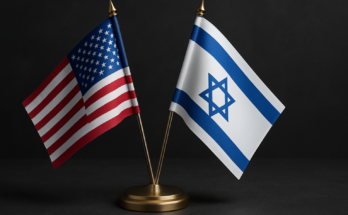Donald Trump entered his second term in Washington promising to project America’s strength abroad and punish those who did not fall in line with his vision of American supremacy. What has emerged, however, is a contradictory foreign policy built on tariffs, ultimatums, and sanctions that are eroding trust even with nations once considered partners. By targeting India, China and Russia with blunt economic instruments, Trump has unintentionally revived a geopolitical arrangement that Washington worked for decades to prevent: the prospect of cooperation among the three powers of Eurasia through the Russia-India-China (RIC) framework.
This shift is not born of ideology or mutual admiration. India and China remain adversaries in several respects, from border disputes to competition for regional influence. Russia, too, has its own ambitions, seeking to preserve its status as a major global actor. Yet when Washington deploys economic warfare indiscriminately, applying double standards and mocking the sovereignty of other states, it forges unity out of necessity. The very moves designed to fragment Eurasia are, in fact, knitting together new alignments across it.
The first spark came with Washington’s 25 per cent tariffs on Indian goods, imposed under the claim that New Delhi was “funding the enemy” by purchasing discounted Russian oil. For India, which has long balanced relations between Moscow and Washington, the announcement felt like betrayal. The United States is India’s largest export destination, yet its punitive measures revealed that the so-called “strategic partnership” was transactional at best. Washington demanded loyalty on Russia while ignoring its own ongoing purchases of Russian uranium, palladium, and fertilisers. The double standard was too stark to ignore.
The contradiction in U.S. behaviour sent shockwaves through Indian policy circles. For decades, India had sought strategic autonomy, building ties with Russia for defence and energy while engaging the West for trade and technology. The tariffs exposed the fragility of this balancing act and raised the question of whether the United States truly respected India’s sovereignty. What Washington viewed as hard bargaining appeared in New Delhi as economic coercion.
The second move was directed at Beijing. Trump threatened a 100 per cent tariff on Chinese goods unless China reduced Russian oil imports. Predictably, Beijing refused. The world’s second-largest economy, facing its own challenges of slowing growth, would hardly allow Washington to dictate its energy partners. In resisting, Beijing found itself in rare alignment with India. Both countries, usually divided by suspicion, now faced the same external threat.
This common pressure created opportunities for coordination. At international forums, Indian and Chinese representatives began resisting Washington’s narratives, insisting on their right to pursue independent energy policies. Moscow, sensing the moment, reintroduced the Russia-India-China trilateral idea first raised in the early 2000s. Unlike before, the concept has now gained traction. China welcomed it, and India, while cautious, refrained from dismissal.
RIC offers a counterweight to Western-led arrangements like NATO and the Quad. It is not an alliance built on trust or shared ideology, but on shared vulnerabilities and pragmatic calculation. India and China may not resolve their border disputes quickly, but both recognise that American trade sanctions can undermine their economic stability. Russia, long a target of sanctions itself, provides both energy and military cooperation. The triangle is not about friendship, but about survival in a world where Washington’s policies appear designed to divide and dominate.
Concrete signs of this shift are already visible. India has resumed direct flight services to China, a move that seemed unlikely after the Galwan Valley clashes. Putin is scheduled to visit New Delhi, followed by trilateral meetings at the Shanghai Cooperation Organisation (SCO) summit in China. The message is clear: despite historic disputes, shared economic and political pressure from the United States is generating practical cooperation.
The hypocrisy of Washington’s position has only deepened resentment. While demanding that India and China cut Russian oil, the West continues to benefit from Russian commodities in other forms. Uranium keeps its nuclear plants running, palladium is vital for high-tech industries, and fertilisers sustain its agricultural systems. The double language, sanctions for others, loopholes for itself, erodes credibility and makes cooperation among Global South states more appealing.
For India, the stakes are immense. Tariffs on textiles, pharmaceuticals, and IT threaten millions of jobs and undermine its export-driven sectors. Sanctions on energy imports create instability in planning its energy security, particularly when India remains heavily dependent on external supplies. For China, Washington’s tariffs strike at the heart of its manufacturing system, threatening a slowdown at a delicate time. For Russia, a partnership with the two Asian giants offers an alternative to Western isolation.
The RIC model fits into a broader Global South approach. India and China are both members of BRICS and the SCO, forums designed to challenge Western dominance in global governance. These institutions are not only symbolic but practical: the BRICS New Development Bank has financed infrastructure projects across the South, and the Asian Infrastructure Investment Bank has become a serious alternative to Western-controlled financial institutions. India, as the second-largest recipient of such funding, already benefits from these arrangements.
The emerging cooperation has wider implications. Together, India and China represent 2.8 billion people and more than 20 per cent of global GDP. With Russia’s energy and defence links, the trio can project a collective voice for reforms in the United Nations, climate finance, and trade rules. At the BRICS Summit in Rio de Janeiro, China even supported India’s call for a greater role in a reformed UN Security Council. This willingness to accommodate shows that geopolitical necessity is stronger than bilateral irritations.
What Washington miscalculated is that coercion rarely works with proud civilisations. India, China, and Russia all view themselves as heirs of long histories and as defenders of sovereignty. When threatened, they do not fold; they seek alternatives. Trump’s tariffs may have been designed to pressure, but they have instead accelerated the very multipolar order that U.S. strategists feared.
There is also the question of hypocrisy in U.S. alliances. While lecturing India on democracy and freedom, Washington maintains ties with authoritarian regimes when convenient. While demanding that India distance itself from Russia, Washington itself collaborated with Pakistan, announcing oil projects with India’s long-time rival. Such gestures, amplified by Trump’s mocking remarks on social media, confirm the transactional nature of the relationship. They are not the words of a partner but of a hegemon who assumes obedience.
By contrast, cooperation with China, while fraught with mistrust, offers space for negotiation and joint projects. India and China have already experimented with cooperative efforts in Afghanistan, training diplomats and exploring regional rail connections. These projects may have stalled after the Galwan clashes, but the precedent exists. With shifting alignments, they can be revived. Infrastructure co-investment could allow India to benefit from Chinese capital while retaining political independence. Joint initiatives in Africa or South Asia would allow both powers to strengthen their positions without direct confrontation.
Global South cooperation is not just about economics; it is about shaping international rules. Both India and China reject unilateral sanctions, preferring multilateral institutions. Both seek reform of the IMF and World Bank, institutions that have historically reflected Western priorities. Together with Russia, they can advocate for trade in local currencies, reducing dependence on the U.S. dollar and building more stable financial systems.
The concept of permanent interests rather than permanent enemies applies here. Border disputes may continue, but the shared goal of resisting Western dominance provides enough ground for collaboration. Both India and China are committed to climate goals, with India aiming for net-zero by 2070 and China by 2060. Joint research, public health cooperation, and technology exchange could serve billions.
The tariffs, sanctions, and insults emanating from Washington have made one thing clear: the U.S. sees India not as a partner but as a pawn. The same applies to China and Russia, who are treated as adversaries even when cooperation would benefit all. In pushing too hard, Washington is accelerating the decline of its influence.
RIC may not yet be a formal alliance, but it is a reality born of necessity. It signals the gradual shaping of a multipolar world where the Global South no longer accepts lectures from the West. The more Washington attempts to impose unilateral rules, the more incentive Eurasian powers will have to find common cause. Trump’s trade war may win applause at home, but abroad, it is redrawing alliances in ways that will haunt Washington long after his presidency.



